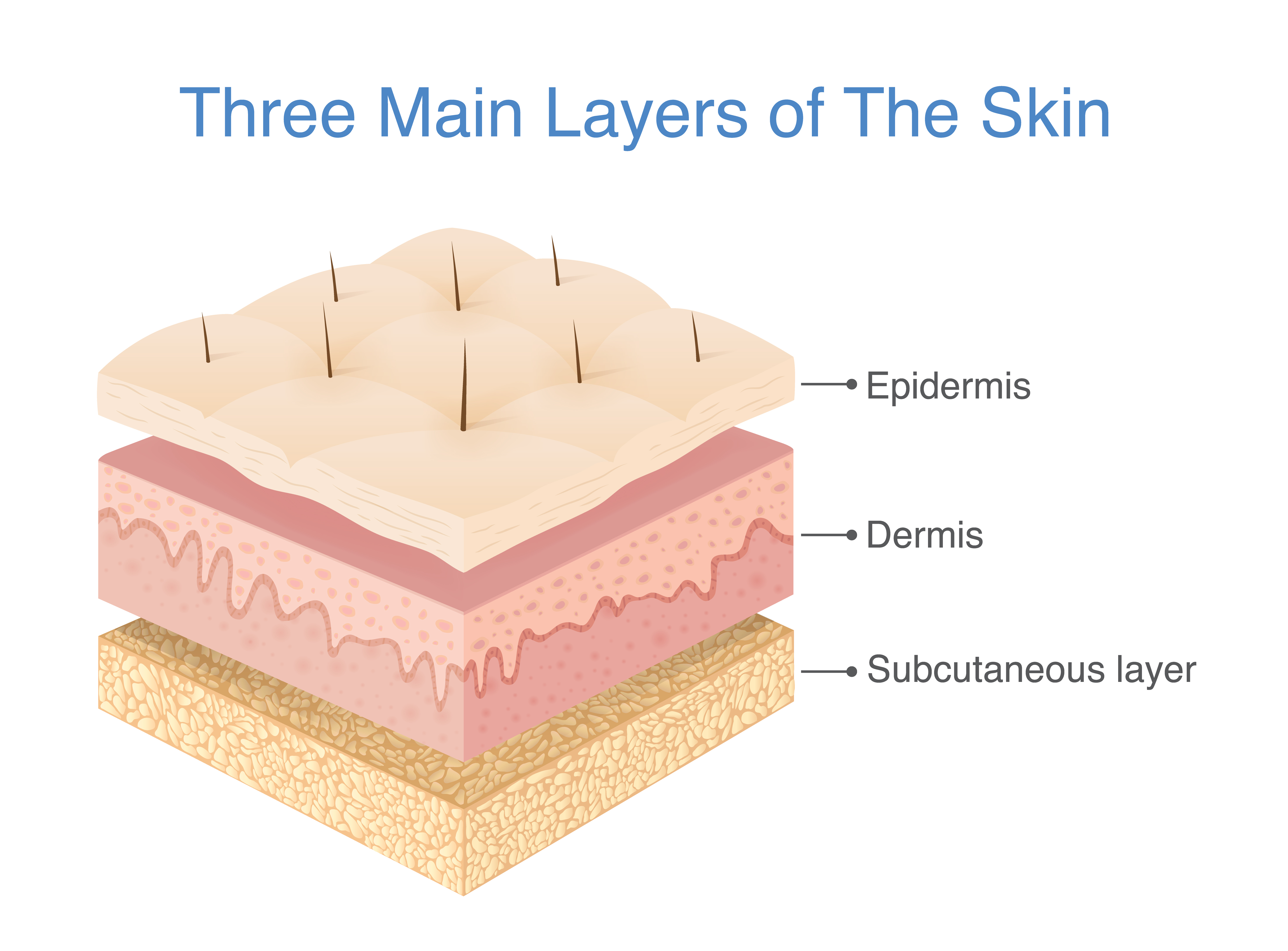
The skin is the body’s largest organ, and it serves a multitude of vital functions, including protection, sensation, temperature regulation, and more. To understand the skin’s complexities, it’s crucial to recognize that it consists of three primary layers: the epidermis, the dermis, and the subcutaneous tissue (also known as the hypodermis). Each of these layers has distinct structures and functions that work in harmony to maintain the health and integrity of the skin. In this comprehensive article, we will explore the three layers of the skin and delve into their respective functions.
1. Epidermis: The Protective Barrier
The epidermis is the outermost layer of the skin and acts as a protective barrier between the body and the external environment. It is a stratified squamous epithelium, meaning it consists of multiple layers of flat, tightly-packed cells. The epidermis contains no blood vessels but receives nourishment from the underlying layers.
Key Functions of the Epidermis:
a. Protection:
- Physical Barrier: The epidermis provides a physical barrier that shields the body from harmful environmental factors like pathogens, chemicals, and UV radiation.
- Waterproofing: It prevents excessive water loss and dehydration.
- Microbial Defense: Specialized immune cells in the epidermis help protect against infections.
b. Pigmentation:
- Melanocytes: Cells called melanocytes in the epidermis produce melanin, a pigment that gives skin its color. Melanin helps protect against the harmful effects of ultraviolet (UV) radiation by absorbing and dissipating UV rays.
c. Sensation:
- Nerve Endings: The epidermis contains sensory nerve endings that allow us to perceive sensations such as touch, temperature, and pain.
d. Cell Renewal:
- Keratinization: New skin cells (keratinocytes) are formed in the lower layers of the epidermis and gradually move upward. As they mature, they fill with a protein called keratin and become tough and waterproof. Eventually, they slough off as part of the skin’s natural renewal process.
2. Dermis: The Supportive Layer
Beneath the epidermis lies the dermis, a thicker layer that provides structural support to the skin and contains various important structures.
Key Functions of the Dermis:
a. Strength and Elasticity:
- Collagen and Elastin: The dermis is rich in collagen, a protein that gives skin its strength, and elastin, which provides elasticity. These components maintain the skin’s firmness and flexibility.
b. Blood Supply:
- Blood Vessels: The dermis houses a network of blood vessels that supply oxygen and nutrients to the skin and help regulate body temperature.
c. Sensory Structures:
- Hair Follicles: Hair follicles, which extend into the dermis, are responsible for hair growth.
- Sweat Glands: Eccrine and apocrine sweat glands, located in the dermis, help regulate body temperature and excrete waste products.
- Nerve Endings: The dermis contains numerous nerve endings for sensing touch, pressure, temperature, and pain.
d. Immune Response:
- Immune Cells: Specialized cells in the dermis, such as macrophages, contribute to the skin’s immune response by defending against infections and foreign substances.
3. Subcutaneous Tissue (Hypodermis): The Insulator and Energy Reservoir
The subcutaneous tissue, often referred to as the hypodermis, is the deepest layer of the skin. It primarily consists of adipose (fat) tissue, connective tissue, and blood vessels.
Key Functions of the Subcutaneous Tissue:
a. Insulation:
- Thermal Regulation: The layer of fat in the subcutaneous tissue acts as an insulator, helping to regulate body temperature by trapping heat.
b. Shock Absorption:
- Cushioning: It provides a cushioning effect, protecting underlying organs and structures from trauma.
c. Energy Storage:
- Fat Reservoir: Adipose tissue stores excess energy in the form of fat, which can be broken down and utilized by the body when needed.
Conclusion
The skin is a remarkable and multifunctional organ with three distinct layers, each serving essential roles. The epidermis acts as a protective barrier, pigmentation regulator, and sensory interface with the environment. The dermis provides structural support, strength, elasticity, and contains sensory structures, blood vessels, and immune components. The subcutaneous tissue, or hypodermis, serves as an insulator, shock absorber, and energy reservoir.
Understanding the functions of these layers not only deepens our appreciation for the skin’s complexity but also highlights the importance of proper skin care and maintenance. Keeping the skin healthy and intact is crucial for overall well-being, as it not only protects against external threats but also plays a role in regulating body temperature and sensory perception.





enim quod recusandae rem eum quod dolor eius dolorem deleniti repudiandae iste blanditiis possimus quo inventore eum vero fuga sed. qui voluptatem ut qui repudiandae eaque totam aut iure quo consectet
aspernatur ab aliquid at odio sit vero accusantium velit quo sed ducimus voluptate sint. dolorem sequi est inventore earum corporis sed molestiae iste corporis quia.
dolor consequatur rerum dolores eos tenetur omnis voluptates distinctio quo unde voluptas exercitationem. quis blanditiis libero et quia.